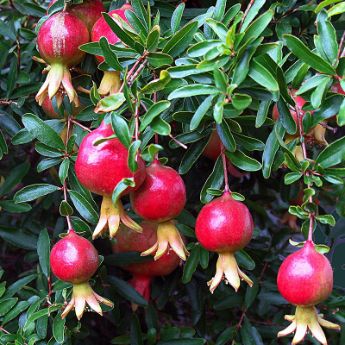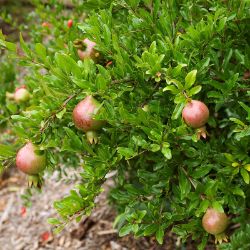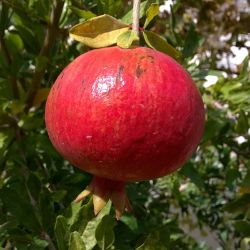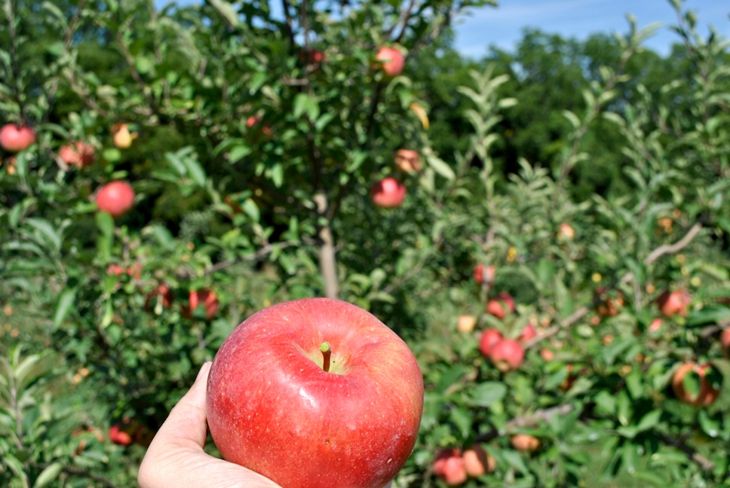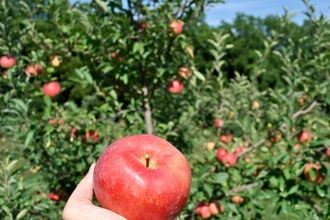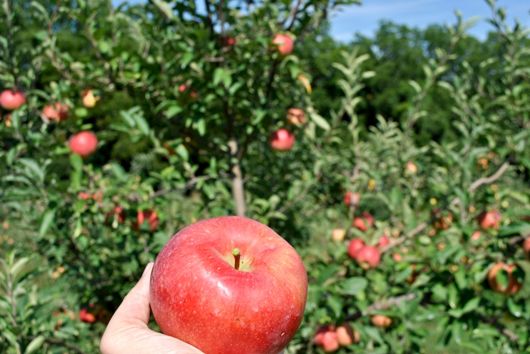Pomegranate Trees
Pomegranate Trees Buyer's Guide
Pomegranate trees (Punica granatum) are prized for their nutrient-rich fruit and ornamental beauty. Pomegranates are native to the Mediterranean region, originating from Iran and India. The pomegranate tree develops brilliant, red-orange flowers that attract beneficials – including hummingbirds! These self-pollinating trees have glossy green, oblong leaves that provide a pleasant contrast to the bright blossoms and carmine fruit. Since pomegranate trees are deciduous, their foliage turns a bright, yellow-gold color in the fall prior to dropping.
The pomegranate fruit – which is technically a berry – ripens in fall. Once harvested, the outer peel of the pomegranate can be opened to reveal compartments of small, pulp-covered seeds. Each pomegranate seed is edible whole. Whether you’re interested in growing a fruit with antioxidants, fiber, and other health benefits or just looking for a unique addition to your fruit garden, a pomegranate tree is a great fit – even in containers!
To ensure your growing success and satisfaction, there are a few things to consider when you buy a pomegranate tree.
Zone Compatibility
Your climate plays an important role in whether a pomegranate tree will produce fruit or even survive. Before ordering a tree, make sure its recommended hardiness zone range includes your area. If your location is outside of the recommended range for pomegranate trees, then consider planting these trees in containers for better control and protection as they grow.
Mature Tree Size
Make sure you pick the right size tree for your available space. When our pomegranate trees mature they will be about 20' tall and wide. These trees can be kept smaller through pruning.

